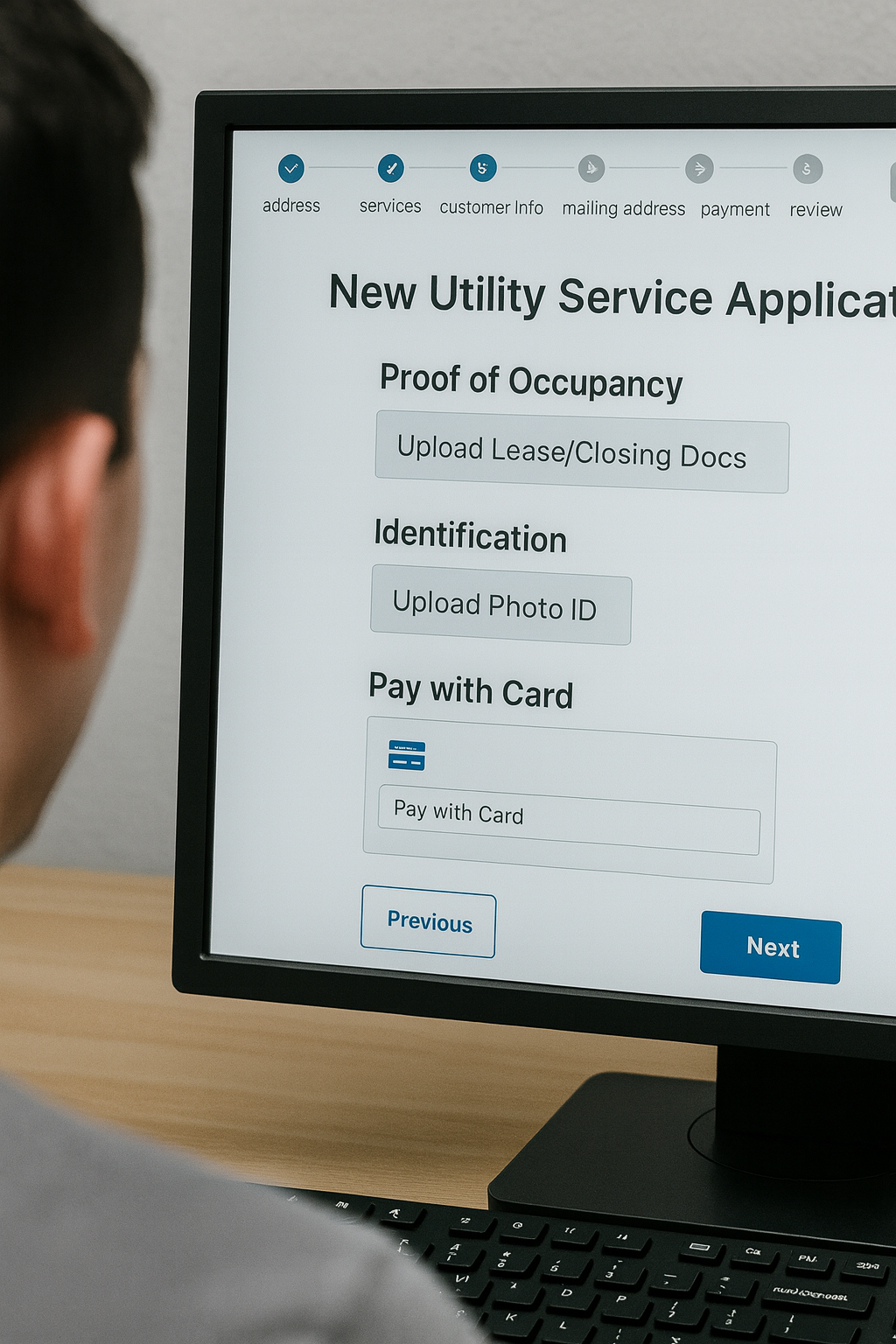6 Best Practices for a Smooth Utility Service Application
Starting utility service shouldn’t feel like running an obstacle course (or a marathon you never trained for). A clear and consistent application process protects both the customer and the utility, reducing delays and preventing disputes.
As many utilities and municipalities approach fiscal year-end, now’s a good time to examine your service application process. Does it protect both you and the customer? Do you provide multiple application channels? Are timelines clear? Is the process too expensive for the utility?
Here are 6 best practices for a smoother service application:
1. Require Proof of Occupancy
Whether it’s a rental agreement, lease, or closing documents, requiring proof of residence helps confirm applicants are authorized to open service at the property. This prevents fraudulent accounts and billing confusion.
As Connected newsletter contributor Gary Sanders points out, a utility bill is often accepted as proof of identity. If you don’t verify ID with a lease or closing documents, the first bill you send could become “proof” of a fake identity.
2. Collect Valid Identification
Asking for a government-issued photo ID verifies identity and minimizes the risk of accounts tied to the wrong person.
It’s not a corner to cut. Skip this, and you risk starting the relationship on the wrong foot.
3. Establish Deposit or Credit Requirements Upfront
Be transparent about any deposits, credit checks, or payment history requirements. Setting expectations early avoids surprises and builds trust.
Clarity at the start gives customers confidence in your communication and spares you future disputes.
4. Provide Multiple Application Channels
Offer online, in-person, and mail-in options, when possible. This accommodates different preferences and increases accessibility.
Online processes that accept deposits and documents aren’t just convenient — they’re now expected. They also cut down office workload.

5. Confirm Contact Information Clearly
Double-check that you have accurate phone numbers and email addresses. These details are critical for billing notices, outage updates, and urgent communications.
If your billing/CIS provider doesn’t support direct text and email, then push leadership for better tools. These are table stakes now, and no utility should have to “get by” with phone and mail communications alone.
6. Consider Charging an Application Fee
Oh, this one might raise eyebrows in some offices, but think about it.
Every application creates costs: office labor, system setup, fieldwork, and so on. A small application fee can offset these expenses and reduce the burden on your utility.
Will these steps save your utility some headaches? Absolutely.
A well-structured application process protects your utility, reduces risk, and sets the tone for a strong customer relationship. It cuts confusion, and maybe even costs.
Utility Process Management (UPM) can help you bring all of this together. Contact us to see it in action for yourself!
More Efficient. More Effective. Greater ROI.
When you have the right tools for the job, everybody wins — especially your customers. Reduce or eliminate pain points, dramatically increase operating efficiency, and provide greater service. Fill out our contact form or call 800.455.3293 to learn more about how United Systems can help!


